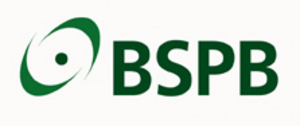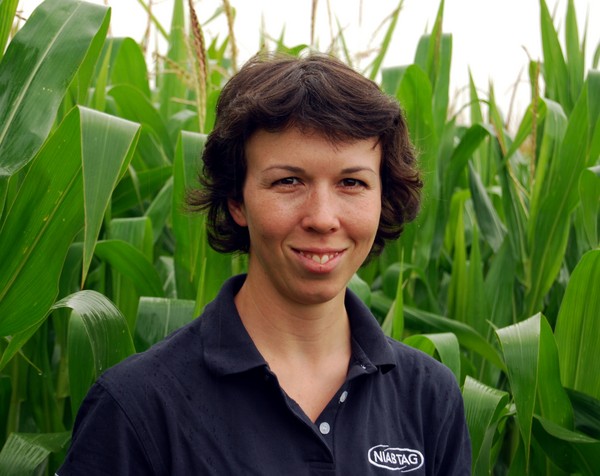- About
-
Research
- Agronomy and farming systems
-
Agricultural crop research
-
Research projects - agriculture
- About SASSA-SAI
- BioBoost
- Biomass Connect
- CTP for Sustainable Agricultural Innovation
- Climate Ready Beans - workshop presentations (March 2022)
- Crop diversity HPC cluster
- Designing Future Wheat
- Final project workshop
- Get involved
- List of materials
- News and updates
- Partners
- Rustwatch
- The Sentinel Crop Disease Surveillance Network
- The research team
- UK Cereal Pathogen Virulence Survey
- UK wheat varieties pedigree
- Weed management - IWM Praise
- Crop breeding
- Crop characterisation
- Data sciences
- Genetics and pre-breeding
- Plant biotechnology
- Plant pathology and entomology
- Resources
-
Research projects - agriculture
-
Horticultural crop research
-
Research projects - horticulture
- Augmented Berry Vision
- BEESPOKE
- Boosting brassica nutrition in smart growing systems
- CTP for Fruit Crop Research
- Develop user-friendly nutrient demand models
- Egg laying deterrents for spotted wing drosophila
- Enhancing the nutritional quality of tomatoes
- Improving berry harvest forecasts and productivity
- Improving vineyard soil health through groundcover management
- Intelligent growing systems
- Knowledge transfer for sustainable water use
- POME: Precision Orchard Management for Environment
- RASCAL
- STOP-SPOT
- UV-Robot
- Crop science and production systems
- Genetics, genomics and breeding
- Pest and pathogen ecology
- Field vegetables and salad crops
- Plum Demonstration Centre
- The WET Centre
- Viticulture and Oenology
-
Research projects - horticulture
- Crop Science Centre
- Research Projects
-
Services
- Analytical Services
- Business Development
- Commercial trial services
- Membership
- Plant breeding
- Plant characterisation
- Seed certification
-
Training
-
Technical agronomy training
- Advanced crop management of bulb onions
- Advanced crop management of vegetable brassicas
- Advanced nutrient management for combinable crops
- Benefits of cover crops in arable systems
- Best practice agronomy for cereals and oilseed rape
- Developing a Successful Strategy for Spring Crops
- Disease Management and Control in Cereal Crops
- Incorporating SFI options into your rotation
- Protected Environment Horticulture – Best Practice
- Techniques for better pest management in combinable crops
- Crop inspector and seed certification
- Licensed seed sampling
-
Technical agronomy training
- News & Views
- Events
-
Knowledge Hub
- Alternative and break crops
-
Crop genetics
- POSTER: Diversity enriched wheat (2025)
- POSTER: Genetics of wheat flag leaf size (2024)
- POSTER: Wheat yield stability (2024)
- Poster: Traits for future cereal crops (2022)
- POSTER: wild wheat fragment lines (2022)
- POSTER: Improving phenotyping in crop research (2022)
- PRESENTATION: Plant breeding for regen ag
- Poster: Designing Future Wheat (2020)
- Crop nutrition
-
Crop protection
- POSTER: Understanding the hierarchy of black-grass control (2025)
- POSTER: Emerging weed threats (2025)
- POSTER: Disease control in barley (2025)
- Poster: Weed seed predation in regen-ag (2024)
- POSTER: Disease control in winter wheat (2025)
- POSTER: Mode of action (2023)
- POSTER: Inter-row cultivation for black-grass control (2022)
- POSTER: UKCPVS winter wheat yellow rust in spring 2025 (2025)
- Poster: Management of Italian ryegrass (2021)
- POSTER: UKCPVS winter wheat rusts - 2024/25 review (2025)
- POSTER: UKCPVS disease monitoring and the benefit to UK growers (2025)
- POSTER: Diagnosing and scoring crop disease using AI (2025)
- POSTER: Finding new sources of Septoria resistance (2024)
- POSTER: Fungicide resistance research (2024)
- POSTER: Detecting air-borne pathogens (2024)
- POSTER: Oilseed rape diseases (2024)
- POSTER: Fungicide resistance research (2024)
- POSTER: Improving chocolate spot resistance (2022)
- Poster: Pathogen diagnostics (2022)
- Fruit
- Regen-ag & sustainability
-
Seed certification
- POSTER: Wheat DUS (2024)
- POSTER: Innovation in variety testing (2024)
- POSTER: AI and molecular markers for soft fruit (2024)
- POSTER: Barley crop identification (2023)
- POSTER: Herbage grass crop identification (2023)
- POSTER: Herbage legume crop identification (2024)
- POSTER: Minor cereal crop inspecting (2023)
- POSTER: Pulse crop identification (2023)
- POSTER: Wheat crop identification (2023)
-
Soils and farming systems
- POSTER: Checking soil health - across space and time (2024)
- POSTER: Checking soil health - step by step (2024)
- POSTERS: Changing soil management practices (2022)
- Poster: Monitoring natural enemies & pollinators (2021)
- POSTER: Soil structure and organic matter (2024)
- POSTER: Novel wheat genotypes for regen-ag (2024)
- Video: New Farming Systems project (2021)
- Video: Saxmundham Experimental Site (2021)
- POSTER: Impact of prolonged rainfall on soil structure (2024)
- POSTER: Soil & agronomic monitoring study (2024)
- POSTER: The impact of rotations & cultivations (2024)
- VIDEO: Great Soils; soil sampling guidelines (2020)
- Poster: Soil invertebrates within arable rotations (2024)
- VIDEO: Soil health assessment (2021)
- POSTER: Saxmundham - modern P management learnings
- POSTER: Saxmundham - 125 years of phosphorus management
- Poster: Soil phosphorus - availability, uptake and management (2025)
- POSTER: Morley long term experiments (2025)
- POSTER: Exploiting novel wheat genotypes for regen-ag (2025)
- Video: Saxmundham Experimental Site (2021)
- Varieties
NEWS: 2017 Forage Maize and Biogas Maize Descriptive Lists issued by BSPB
Nine new first-choice varieties have been added to the British Society of Plant Breeder’s 2017 Forage Maize Descriptive Lists (DL), alongside 14 new varieties on the Forage Maize for Anaerobic Digestion DLs.
Download the BSPB 2017 ‘Forage Maize’ and ‘Forage Maize for AD’ Descriptive Lists.
The varieties Kompetens and Aurelius KWS from KWS, LG30 209 and Reason from Limagrain, SY Feeditop and NordicStar from Syngenta, plus Spyci CS, Sunshinos and RGT Oxxgood from Caussade Semences, Grainseed and RAGT respectively have been added to the Favourable Sites DL. Reason, Aurelius KWS, SY NordicStar and Sunshinos were also added as first choice varieties to the Less Favourable DL, aimed at ‘marginal’ growing conditions.
The 2017 DLs provides farmers with a range of varieties to select from. This diversity allows selection of high starch yielding varieties, maximum digestibility ensiled material, or high yielding varieties to suit a farmer’s needs all within the suitable maturity range for the farm location.
New first choice varieties for favourable sites
NIAB TAG’s forage crop specialist Dr Joanna Matthews says the nine new varieties offer an excellent range of maturity for farmers within favourable sites to select from. “Reason has the earliest maturing score of the new first choice DL additions with a 35.6% dry matter content at harvest. SY Feeditop is the latest maturing at 28.3%, the lowest score on the List.”
The new additions include a cluster of potentially high yielding varieties with Kompetens, LG30 209, Spyci CS, Aurelius KWS, Sunshinos and SY Feeditop offering yields in excess of 17.6 t DM/ha. “All the new varieties have excellent quality characteristics with MEs ranging from 11.18 to 11.47 MJ/kg dry matter. Particular reference must be made to LG30 209, Spyci CS, Sunshinos and SY Feeditop with ME levels that demonstrate significant improvement over other varieties for their maturity. And SY NordicStar, RGT Oxxgood and Reason demonstrate high percentages of starch accumulated at harvest, in the region of 32-36% dry matter content, producing a valuable high-starch yielding silage.”
New first choice varieties for less-favourable sites
Dr Matthews highlights the wide diversity in maturity offered by the four varieties Reason, Aurelius KWS, SY NordicStar and Sunshinos, added to the Less Favourable DL. “With the new varieties showing a three week range in maturity scores there is greater flexibility than ever in the variety selection process.
“Growers are looking for highly digestible, good quality silage plus early vigour; often an undervalued character as the ability of a variety to demonstrate vigorous early growth is particularly important in more challenging condition represented by the less favourable list. The new varieties are good all-rounders with yield potentials of between 16.6 and 17.2 t DM/ha, combined with reasonable starch and ME yields. SY NordicStar also shows a very good eyespot resistance profile which can be a valuable asset in susceptible areas and years, as demonstrated in the 2016 growing season.”
Biogas Maize
The 2017 Forage Maize for Anaerobic Digestion (AD) Descriptive List for favourable sites has 35 varieties, with 14 new listings of Sunshinos, ES Lovely and ES Cluedo from Grainseed, Tiberio and Konsulixx from RAGT, SY Feeditop and SY NordicStar from Syngenta, as well as Rogoso, ES Pearl and Coditank from DLF and LG30 209, Sunbeam, Lidano and Osterbi CS from Limagrain, Dow AgroSciences, Germinal and Caussade Semences respectively.
The AD DL for Less Favourable sites includes 10 new varieties; Sunshinos, ES Lovely, ES Cluedo, Rogoso, ES Pearl and Coditank as well as SY Nordicstar, Sunbeam, Lidano and Osterbi CS. This increases the number of varieties to 27 in total.
All varieties on the 2017 Lists have been nominated by the plant breeders and are suitable for biogas producers growing and using the crop as a feedstock. The DLs aims to aid variety selection as producers can check energy output in the form of metabolisable energy (ME) and other traits such as dry matter content and yield, early vigour and standing power.
For the first time this year growers will benefit from the inclusion of variety resistance ratings to maize eyespot (Aureobasidium zeae formally known as Kabatiella zeae). The ratings were included for the first time on the Forage Maize DLs in 2015. “The disease can severely affect yields due to early die-back and the ratings may be an invaluable aid to selection for concerned growers in a susceptible area. It is a disease favoured by wet conditions and can be more prevalent in the west and south of the UK,” says Dr Matthews.
- BSPB is the representative organisation for plant breeders in the UK.
- The BSPB Forage Maize Crop Group organises independent Descriptive List testing for forage maize varieties.
- Forage maize varieties are tested independently for three years (six locations in Year 1 and 2 and nine locations in Year 3) before addition to the Descriptive List. The trial work is carried out by NIAB and plant breeders under contract to BSPB.
- Trials are grown to standard protocols which are reviewed annually to ensure that they are relevant to the industry. All trials are independently inspected to ensure compliance with protocol and high standards of trialling and the data are independently verified and analysed by NIAB.
- The varieties tabulated on the AD DL are forage maize varieties that the breeders have nominated as having potential suitability for AD use. The List may not represent the full range of forage maize or biogas varieties that are available for the market.







